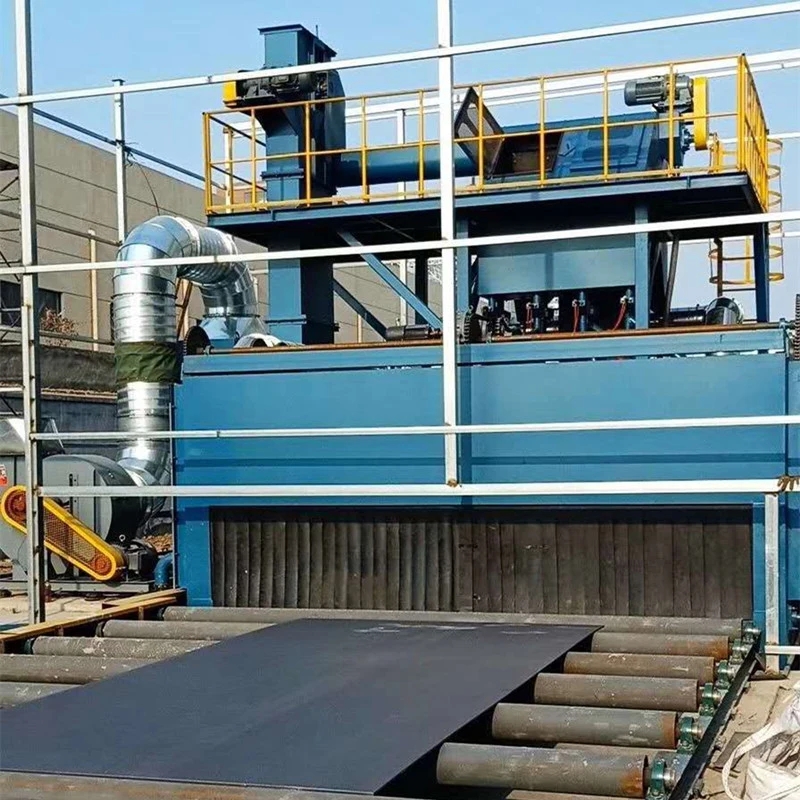Types of Shot Blasting Equipment
2024-06-20
Shot blasting equipment is used extensively in industrial settings for surface preparation, cleaning, and finishing of materials through the process of shot blasting. This method involves propelling abrasive materials, known as shots or grits, at high velocities onto the surface of a workpiece to achieve various objectives like removing contaminants, creating texture, or preparing surfaces for further treatments like painting or coating. Here's an overview of shot blasting equipment, its types, applications, and considerations:
Types of Shot Blasting Equipment
1. Wheel Blasting Machines:
- Centrifugal Wheel Blasting: Utilizes a high-speed rotating wheel to propel abrasive media.
- Airless Wheel Blasting: Uses compressed air to propel abrasive media through a wheel.
2. Air Blasting Equipment:
- Pressure Blasting: Abrasive media is propelled at high pressure through a nozzle onto the workpiece.
- Suction Blasting: Uses a vacuum system to propel and recover abrasive media.
3. Shot Peening Equipment:
- Specialized type of shot blasting used to induce compressive stress on metal surfaces, improving fatigue resistance.
Applications of Shot Blasting Equipment
1. Surface Preparation:
- Cleaning: Removal of rust, scale, paint, and other contaminants from metal surfaces.
- Roughening: Creating a rough texture on surfaces for better adhesion of coatings.
2. Deburring and Deflashing:
- Removing sharp edges, burrs, and flash from metal and plastic components.
3. Descaling:
- Removing mill scale from steel and cast iron surfaces.
4. Shot Peening:
- Strengthening metal components by inducing compressive stress to improve fatigue life.
5. Decorative Finishing:
- Creating decorative patterns or textures on surfaces for aesthetic purposes.
Considerations for Choosing Shot Blasting Equipment
1. Type of Abrasive Media:
- Choose the appropriate abrasive material (steel shot, steel grit, aluminum oxide, etc.) based on the material being processed and the desired surface finish.
2. Equipment Size and Capacity:
- Select equipment that matches the size and weight of your workpieces.
- Consider production volume and throughput requirements.
3. Dust Collection and Ventilation:
- Ensure effective dust collection and ventilation systems to maintain a clean and safe working environment.
- Compliance with environmental regulations regarding dust emissions.
4. Automation and Control:
- Consider the level of automation (manual, semi-automatic, fully automatic) that suits your production needs.
- Control systems for adjusting blasting parameters such as pressure, media flow rate, and nozzle movement.
5. Maintenance and Serviceability:
- Evaluate ease of maintenance, availability of spare parts, and service support from the equipment manufacturer.
6. Safety Features:
- Ensure equipment is equipped with safety features such as blast curtains, protective gear for operators, and emergency shutdown systems.
Popular Brands and Manufacturers
1. Wheelabrator
2. Rosler
3. Guyson
4. AGTOS
5. BlastPro
Conclusion
Shot blasting equipment plays a crucial role in various industries by providing efficient and effective surface preparation, cleaning, and finishing solutions. Choosing the right type of equipment involves considering factors like the type of abrasive media, equipment size, automation level, maintenance requirements, and safety features. Whether for cleaning, roughening, or enhancing the surface properties of materials, shot blasting equipment contributes significantly to improving product quality, durability, and operational efficiency in industrial applications.



